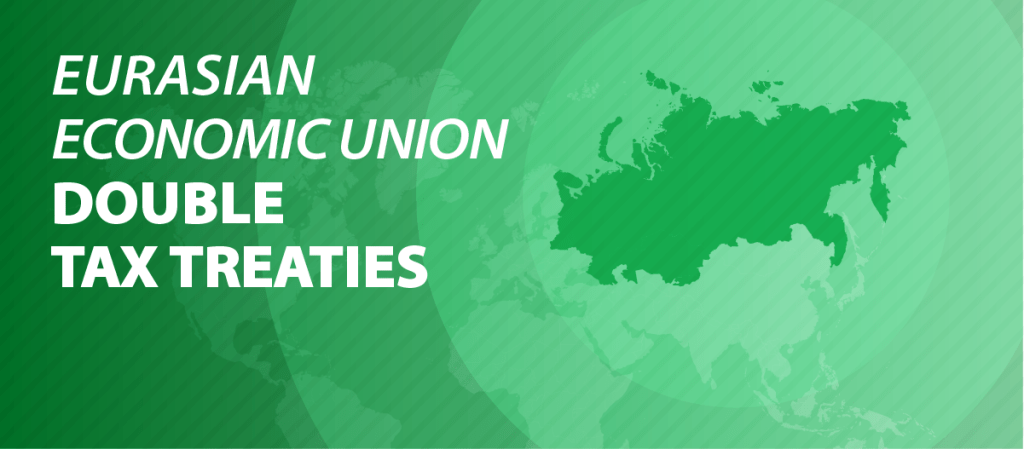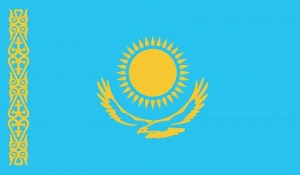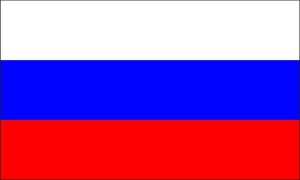The Eurasian Economic Union – Applicable Double Tax Treaties for Foreign Investors and Traders


The Eurasian Economic Union (EAEU) comprises Armenia, Belarus, Kazakhstan, Kyrgyzstan, and Russia. It is becoming increasingly important as a free trade bloc as it geographically sits between China and the European Union, and is consequently a major player in the Belt and Road Initiative.
Members of the EAEU enjoy tax free status in trade in goods, and are in the process of unifying their complete tax codes, making it easier to transfer goods between them. This has special relevance along the Belt and Road and the transportation of goods travelling west from China and vice versa. It is also seen to boost intra-EAEU trade, with this increasing by 38 percent last year. Collectively, EAEU trade is currently worth some US$2.2 trillion.
The Eurasian Economic Union is also heavily involved in a program that will see it have its own, additional free trade agreements (FTAs) with other countries. To date, this includes Vietnam, which has seen investment from the EAEU rise to US$10 billion from zero in the past 24 months and China, which has signed off a non-preferential FTA but is poised to add product specifics to this. Iran has also signed off a FTA with the EAEU while India and other countries, including Singapore and Indonesia are currently negotiating FTAs with the bloc. A summary of how this impacts Asia, Africa, and Europe can be read here.
Double tax avoidance (DTA) treaties are essential tools for foreign investors and traders as they both mitigate against the possibly of being taxed twice in two countries for the provision of the same service, and also typically contain concessions in the form of reduced levels of VAT and other taxes, often by 50 percent.
In short, applying for Double Tax Avoidance status when planning to trade with another nation can save you money and add significantly to your bottom line.
Businesses from countries that have a DTA treaty with the EAEU and wish to trade with EAEU member-states may be able to apply for tax exemptions and reductions under the terms of the specific agreement.
These countries, broken down by each individual EAEU member, are as follows:
Armenia

Armenia has entered into double tax treaties with 52 countries to prevent double taxation and allow cooperation between Armenia and other tax authorities:
Europe and Caucasus
Austria / Belgium / Belarus / Bulgaria / Croatia / Cyprus / Czech Republic / Denmark / Estonia / Finland / France / Georgia / Germany / Greece / Hungary / Ireland / Israel / Italy / Latvia / Lithuania / Luxembourg / Macedonia / Moldova / Netherlands / Norway / Poland / Portugal / Romania / Serbia / Slovakia / Slovenia / Spain / Sweden / Switzerland / Ukraine / United Kingdom
Middle East
Iran / Kuwait / Lebanon / Qatar / Saudi Arabia / Syria / UAE
Asia
China / India / Indonesia / Thailand
Central Asia
Kazakhstan / Mongolia / Tajikistan / Turkmenistan
North America
Canada
Belarus

Belarus has signed 70 DTAs with the following countries:
Europe and Caucasus
Armenia / Austria / Azerbaijan / Belgium / Bulgaria / Croatia / Cyprus / Czech Republic / Denmark / Estonia / Finland / France / Georgia / Germany / Hungary / Iceland / Ireland / Israel / Italy / Latvia / Lithuania / Macedonia / Moldova / Netherlands / Norway / Poland / Portugal / Romania / Serbia / Slovakia / Slovenia / Spain / Sweden / Switzerland / Turkey / Ukraine / United Kingdom
Middle East
Iran / Kuwait / Lebanon / Oman / Qatar / Saudi Arabia / Syria / UAE
Africa
Egypt / South Africa
Asia
China / Hong Kong / India / Indonesia / Japan / North Korea / South Korea / Laos /
Malaysia / New Zealand / Philippines / Singapore / Sri Lanka / Thailand / Vietnam
Central Asia
Kyrgyzstan / Mongolia / Tajikistan / Turkmenistan / Uzbekistan
North America
United States
South America
Ecuador / Venezuela
Kazakhstan

Kazakhstan has signed off 52 DTAs as follows:
Europe and Caucasus
Armenia / Austria / Azerbaijan / Belarus / Belgium / Bulgaria / Czech Republic / Estonia / Finland / France / Georgia / Germany / Hungary / Ireland / Italy / Latvia / Lithuania / Luxembourg / Macedonia / Moldova / Netherlands / Norway / Poland / Romania / Russia / Serbia / Slovakia / Slovenia / Sweden / Switzerland / Turkey / Ukraine / United Kingdom
Middle East
Iran / Qatar / Saudi Arabia / Syria / UAE
Asia
China / India / Japan / South Korea / Malaysia / Pakistan / Singapore / Vietnam
Central Asia
Kyrgyzstan / Mongolia / Tajikistan / Turkmenistan / Uzbekistan
North America
Canada
Krygyzstan

Krygyzstan has signed 25 DTAs as follows:
Europe and Caucasus
Austria / Belarus / Germany / Latvia / Lithuania / Poland / Russia / Switzerland / Turkey / Ukraine
Pending: Estonia, Georgia, United Kingdom
Middle East
Iran / Kuwait / Qatar / Saudi Arabia / UAE
Asia
China / India / South Korea / Malaysia / Pakistan
Central Asia
Mongolia / Tajikistan / Uzbekistan
North America
Canada
Russia

Russia has 81 DTAs with different countries, and these are as follows:
Europe and Caucasus
Albania / Armenia / Austria / Azerbaijan / Belarus / Belgium / Bulgaria / Croatia / Cyprus / Czech Republic / Denmark / Finland / France / Germany / Greece / Hungary / Iceland / Ireland / Israel / Italy / Latvia / Lithuania / Luxembourg / Macedonia / Malta / Moldova / Netherlands / Norway / Poland / Portugal / Romania / Serbia / Slovakia / Slovenia / Spain / Sweden / Switzerland / Turkey / Ukraine / United Kingdom
Middle East
Iran / Kuwait / Lebanon / Qatar / Saudi Arabia / Syria
Africa
Algeria / Botswana / Egypt / Mali / Morocco / Namibia / South Africa
Asia
Australia / China / Hong Kong / India / Indonesia / Japan / North Korea / South Korea / Malaysia / New Zealand / Philippines / Singapore / Sri Lanka / Thailand / Vietnam
Central Asia
Kazakhstan / Kyrgyzstan / Mongolia / Tajikistan / Turkmenistan / Uzbekistan
North America
Canada / Mexico / United States
South America and Caribbean
Argentina / Chile / Cuba / Venezuela
Application procedures
DTAs apply to businesses that are resident in one or more of the countries shown. This means, for example, that a foreign-owned business based in China and paying taxes there can apply for DTA status using the China end of a particular treaty.
Firstly, the agreement needs to be thoroughly read and examined to see what parts of it apply to your bilateral trade or business in the pertinent EAEU nation. If the foreign investor has invested in a specific country, any pertinent tax reductions need to be discussed with the relevant tax authority, which is typically either customs or the regional tax bureau. They need to be aware of the status before you can claim benefits. This means it is a good idea to do this as part of any new application procedure to establish a company or trade within the EAEU.
For EAEU investors looking overseas, such as a Kazakhstan business looking to trade or invest in the United Kingdom, the same situation applies, discussions and a application to apply for tax relief under the terms of the relevant DTA need to be made with the pertinent tax bureau.
For assistance with understanding Double Tax Avoidance Treaties operated by members of the Eurasian Economic Union, applying for business licenses, and dealing with tax bureau applications, please contact us at silkroad@dezshira.com for further assistance.
About Us
Silk Road Briefing is produced by Dezan Shira & Associates. The firm provides business intelligence, investment advisory, due diligence, tax advisory, corporate establishment and structuring, accounting, payroll and related professional services throughout China, India, ASEAN, Russia and the Eurasian region, servicing both Governments and Multinational clients. To contact us please email silkroad@dezshira.com or visit us at www.dezshira.com
 Related Reading:
Related Reading:
![]() A Brave New World: China, Russia, and ASEAN Lead Eurasian Free Trade
A Brave New World: China, Russia, and ASEAN Lead Eurasian Free Trade
![]() Russia’s Eurasian Economic Union Free Trade Agreement with Beijing Brings Chinese Goods to the EU Border
Russia’s Eurasian Economic Union Free Trade Agreement with Beijing Brings Chinese Goods to the EU Border
China’s New Economic Silk Road
This unique and currently only available study into the proposed Silk Road Economic Belt examines the institutional, financial and infrastructure projects that are currently underway and in the planning stage across the entire region. Covering over 60 countries, this book explores the regional reforms, potential problems, opportunities and longer term impact that the Silk Road will have upon Asia, Africa, the Middle East, Europe and the United States.






